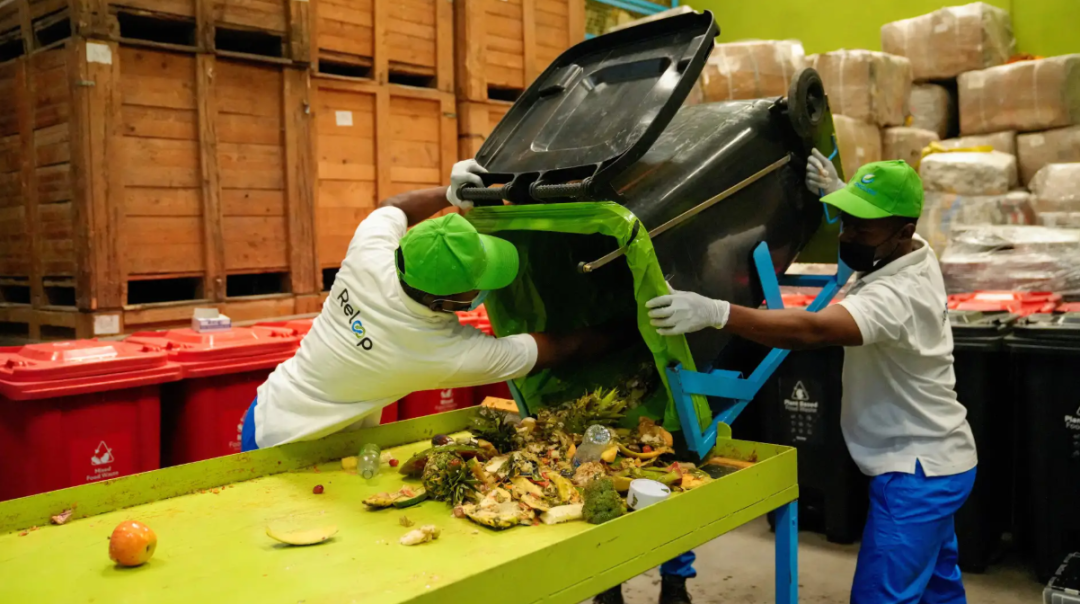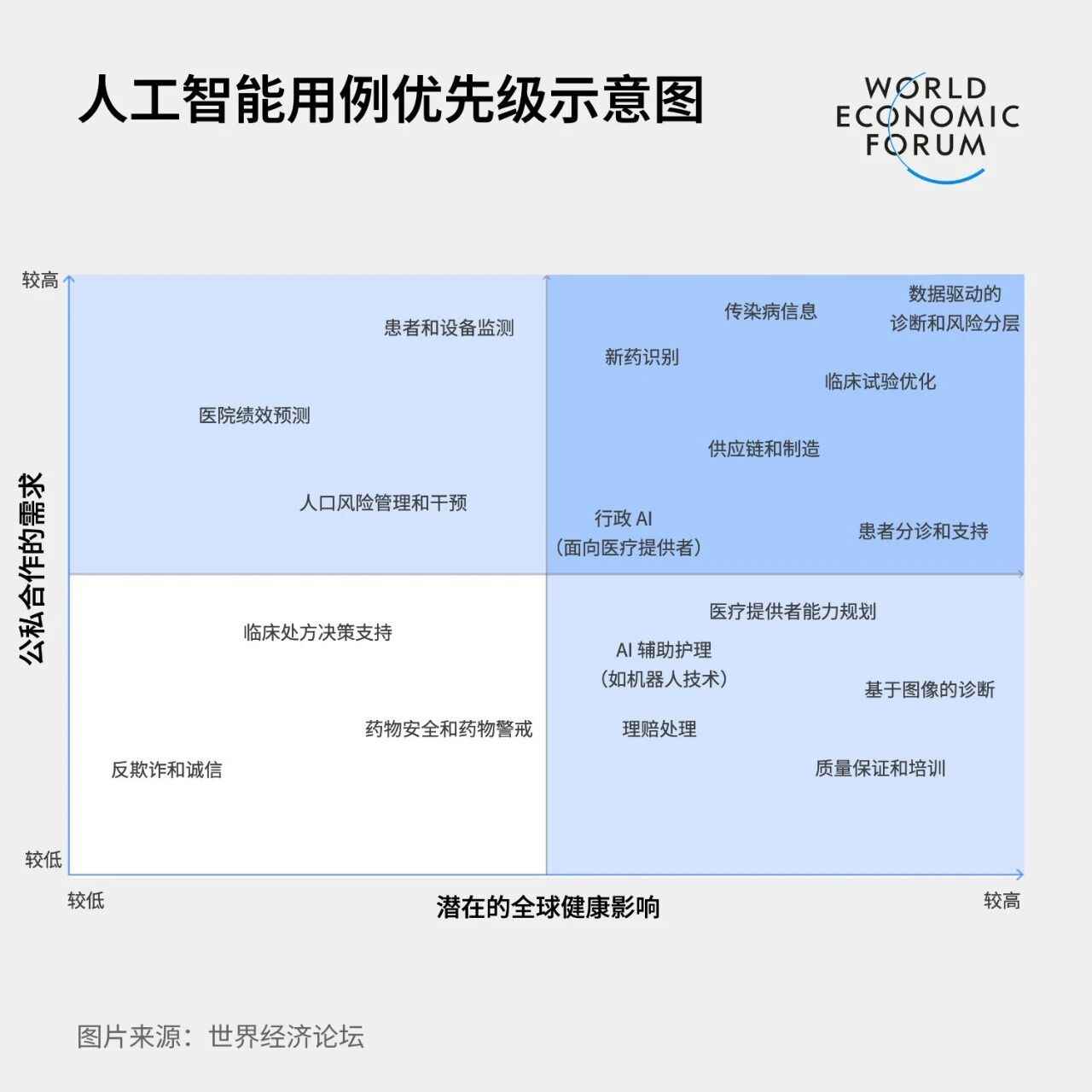

Staff members handle food waste in Dubai.
Image source:Reuters / Nabila Eltigi
Wesley Spindler
Managing Director, Global Sustainability Leadership Team at Accenture
Luna Atamian Hahn-Petersen
Senior Manager, Accenture Sustainability Strategy
Sadaf Hosseini
Head of the UpLink Growth and Innovation Ecosystem at the World Economic Forum
To meet the demands of a growing global population, we must increase food production—but unfortunately, about one-third of all food is lost or wasted each year.
Improving food traceability can help curb this waste and reduce the associated economic, social, and environmental costs.
WillCombining traceability systems with emerging technologies can effectively prevent food loss and waste, enhance the efficiency of food systems, and pave the way for a more sustainable food ecosystem.
The food industry is one of the largest and most critical sectors globally, providing sustenance for over 8 billion people, andProviding employment for half of the global workforceHowever, this industry alsoFacing significant challenges such as growing demand, environmental degradation, and food insecurity.
One of the most pressing core issues among these challenges is food loss and waste. Food loss refers to edible food being discarded at various stages of the supply chain—before it even reaches consumers—while food waste occurs during the consumption phase, such as in retail outlets and households. Although food loss and waste pose significant barriers to tackling climate change, if managed effectively,It's also a significant opportunity.
According toThe Food and Agriculture Organization of the United Nations (FAO)Data shows that approximately one-third of the world's annual food production—about 1.3 billion tons—is either lost or wasted each year. Given that millions of people are already facing hunger, this is not only an economic and humanitarian issue but also an environmental concern.
Reduce foodLoss and wasteThe direct result is that globally30-40% of agricultural land—and the associated water use, chemical inputs, and greenhouse gas emissions—could be avoided. If food loss and waste were treated as a country, it would rank as the third-largest emitter of greenhouse gases, behind only the United States and China.
Addressing food across the entire supply chainLoss and wasteThe issue demands innovative solutions, and traceability has proven to be a key driving force. It’s not only essential for ensuring food safety,It can also play a greater role when combined with emerging technologies.It can enhance supply chain efficiency and prevent foodLoss and waste, paving the way for building a more sustainable food system.
What is food traceability?
Food TraceabilityIt refers to the ability to track any food or ingredient throughout all stages of production, processing, and distribution.
We often get it from the systemFrom the perspective of traceability, it refers to all the data and operations conducted throughout the production and usage process of a product and its components—essential steps taken to maintain critical information. This includes data such as location, as well as unique identifiers.Identifier(For example, barcodes or radio-frequency identification [RFID] tags), sensors, and digital systems that store and record information (such as blockchain).
Traceability helps ensure food safety,By rapidly identifying and recalling contaminated products(Also known asProduct Recall), protecting public health and ensuring compliance with food safety regulations.It also serves as a key driver for businesses to validate sustainability claims—such as sustainable sourcing—in order to meet consumers' growing demand for transparency.
In addition to ensuring safety and transparency, food traceability can also help supply chain participants identify potential inefficiencies that lead to food loss and waste.
The global challenges posed by food loss and waste
It is estimated that food loss and waste cost the global economy billions of dollars each year.A $1 trillionLosses, impacting every link in the food supply chain.For producers, this means lost investments in labor and agricultural inputs, since these crops will never reach consumers. For retailers, it leads to higher disposal costs and inaccurate demand forecasting.
Tackling food loss and waste can unlock the full potential of the entire food system. But to effectively address this issue, we must first understand where and why food is lost or wasted.
AtThe upstream of the supply chain—before food reaches retailers.,13% of the food will be lost.— For perishable foods like fruits and vegetables, this figure is even higher.Improper storage, inadequate handling, and inefficient transportation—particularly in developing countries—are all contributing factors to this issue.For temperature-sensitive products, inadequate cold-chain storage is a key reason for premature spoilage.
At more downstream stages such as retail, food services, and the household level, there are still19% of food is wasted.There are many reasons for this situation, such as excess inventory,Retailers discard edible fruits and vegetables due to their strict standards and relentless pursuit of perfection in appearance., and consumersPurchased too much food that went unused(Especially in developed countries.)
“Decisions made upstream determine the outcomes downstream—ranging from quality to shelf life. ReducingLoss and WasteNot only is collaboration between suppliers and retailers necessary,We also need real-time visibility and shared accountability across the entire value chain. Through traceability, we can gain the insights necessary to act early, prevent waste, and build a food system that is truly efficient and resilient.”
Rosemary Brotchie
Senior Manager, Health and Sustainable Development, Consumer Goods Forum
The United Nations is working to tackle food loss and waste, and has set a goal ofThe global food waste target for 2030. While most regulations prioritize reducing food waste at the downstream level, the European UnionRecently introduced regulations and the World Resources Institute'sThe "10x20x30" InitiativeGlobal voluntary initiatives are driving efforts to reduce upstream losses.
Traceability and technology as tools
To tackle the issue of food loss and waste, the first step is to identify inefficiencies in the supply chain—and traceability is key to doing just that. By providing timely and accurate access to relevant operational data from all stakeholders, traceability can help:People understandThe "location," "time," and "method" of food distribution.
"Estimates suggest that food loss and waste could reach 2.1 billion tons by 2030. Leveraging technology to reduce such losses holds tremendous potential. Tools like RFID, for instance,Track products in real time using tags and sensors"can enhance visibility across the entire supply chain, helping businesses reduce overproduction, streamline recall processes, and minimize waste."
Debbie Shakespeare
Ellie Danielson, Senior Director of Sustainability
When combined with emerging technologies, traceability systems will become even more robust. Innovative technologies such as the Internet of Things (IoT), food sensing, and artificial intelligence (AI) can generate richer, real-time data while delivering actionable insights—empowering businesses to make faster, smarter decisions that effectively prevent food loss and waste.
For example, IoT sensors can monitor real-time temperature and humidity levels during storage and transportation, triggering alerts when issues arise so that timely interventions can prevent food spoilage. Similarly, food sensing technologies like hyperspectral imaging enhance the accuracy of quality assessments in food inspection processes. When combined with artificial intelligence, these tools enable early detection of potential problems and even predictive analysis of shelf life.
To fully unlock the potential of these innovations, technology alone isn’t enough—collaboration, especially data sharing, is the key. Building a food system that’s more transparent, efficient, and accountable requires fostering stronger partnerships across the entire value chain, from producers to distributors and ultimately to retailers.

The above content represents the author's personal views only.This article is translated from the World Economic Forum's Agenda blog; the Chinese version is for reference purposes only.Feel free to share this in your WeChat Moments; please leave a comment at the end of the article or on our official account if you’d like to republish.
Editor: Wan Ruxin
The World Economic Forum is an independent and neutral platform dedicated to bringing together diverse perspectives to discuss critical global, regional, and industry-specific issues.
Follow us on Weibo, WeChat Video Accounts, Douyin, and Xiaohongshu!
"World Economic Forum"


